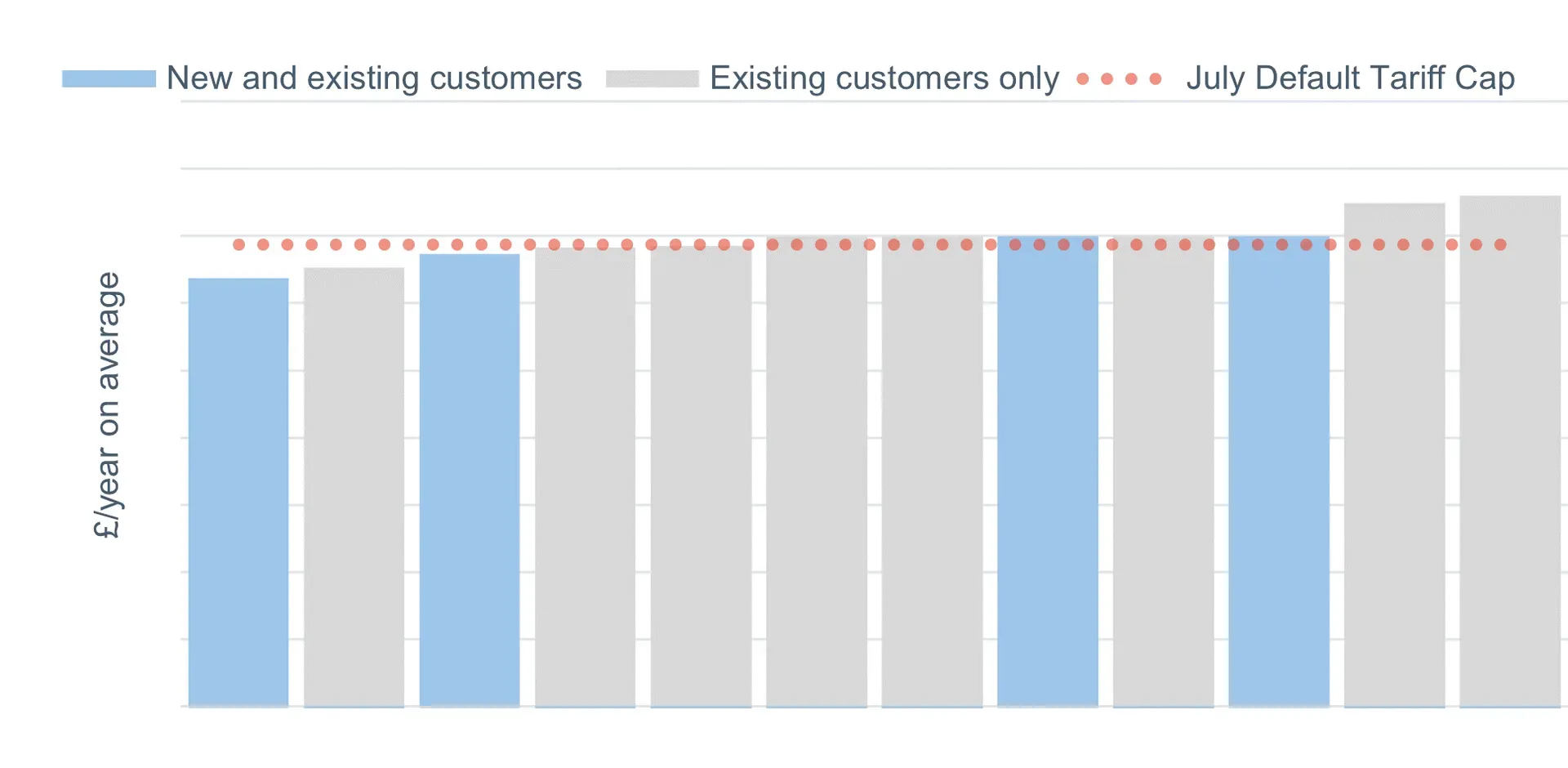With the Default Tariff Cap falling by 17% compared to the Energy Price Guarantee (EPG) at the start of the month, there has been a great deal of attention around the possible return of fixed tariffs for domestic consumers. Several fixed tariffs were indeed launched in recent weeks, representing a first return to competition in the market since the introduction of the EPG in October 2022.
Though many of the fixed deals introduced in June and July were exclusively offered to existing customers, a handful of open market fixed deals were made available (Figure 1).
Figure 1: Domestic fixed tariffs 15 July 2023

Source: The Energy Shop and Cornwall Insight analysis. Suppliers, variations and chart figures available in our Domestic Tariff Report.
There are four fixed tariffs currently pricing below the cap, with the cheapest priced at under £2,000/year. A typical consumer taking that fixed deal at the start of July would be paying more or less in line with the Default Tariff Cap rates over the duration of the one-year fixed term, based on the current level of the cap and our forecasts over that period[1]. While there are currently limited financial gains to be made from taking a fixed deal, the appetite for price certainty among domestic consumers in the context of the market volatility seen in the last two years is likely to impact the take up of these fixed offerings.
Other points to note which are discussed more extensively in the Domestic Tariff Report reports are:
- July also saw the return of collective switching, whereby a group of consumers negotiate with suppliers for a specific tariff, typically via a third party.
- On 5 July, in an email to registrants, iChoosr announced who had won the auction for its Big Community Switch.
- The Market Stabilisation Charge has been steadily declining since its peak in January 2023, discussions over the need for the mechanism are being had.
This update is taken from our Weekly Domestic Tariff report, which provides an up-to-date comparison of domestic competitor’s tariff propositions. To find out more about a subscription to the report and similar reports which may help your company, please contact Magdalena Jennings at m.jennings@cornwall-insight.com
[1] All pricing figures and cap forecasts are using Ofgem’s current Typical Domestic Consumption Values (TDCVs). For our latest price cap forecasts using the new TDCVs, effective from 1 October 2023, click HERE.













